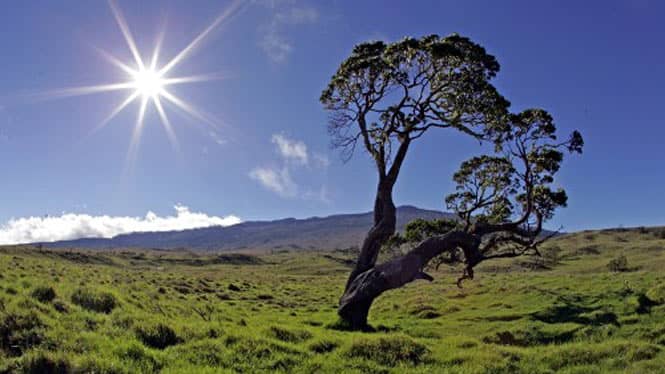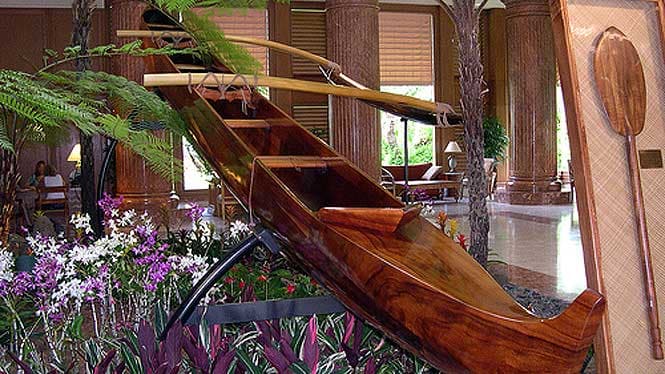Even though its numbers are in rapid decline, koa trees remain the king of Hawaiian forests. It is the tallest and most revered of Hawaii’s native trees. It also ranks among the oldest tree species in the state and unquestionably carries the highest value.

“What a mine of wealth these magnificent koa trees would be to the people who should transport their timber to the shore and ship it to foreign countries! The koa is the Hawaiian mahogany. It takes a polish like gold or diamonds. In the hands of foreign workmen, it might be made as ornamental as precious marble.” —George Leonard Chaney, 1879
Biologists regard koa (Acacia koa) as one of the first botanical “settlers” of Hawaii because more than 40 species of endemic insects live on koa—more than on any other native tree. Several native bird species are associated with koa either primarily or exclusively. It’s estimated that the koa forest predates the arrival of man by millions of years.
Purpose

Koa was used in early Hawaii to build war canoes, surfboards, and calabashes. Today, it is used as a material for a variety of furniture pieces and accessories, including tables, desks, cabinets, benches, clocks, picture frames, desk items and more.
In terms of strength and weight, koa is similar to black walnut. It is a moderately heavy wood. It’s stable, works well and has a rich, deeply reflective glow when finished with oils and modern varnish or lacquer. Its colors range from light brown to deep red and brown hues.
Value
Koa is the fastest growing of Hawaii’s valuable hardwoods, growing as much as an inch in diameter per year. A koa tree can reach a hundred feet in height, with a trunk diameter of five feet or larger.
The depletion of koa has led to a dramatic rise in prices. Some woodworkers, in an effort to lessen costs, have introduced products that include both koa and other types of hardwood.
Beware of koa imitations that have been hitting the market in recent years. Faux koa products are substantially cheaper than the real thing. Koa flooring, for example, is priced at about $30 a square foot. An Australian wood with a similar look may retail for half that amount.